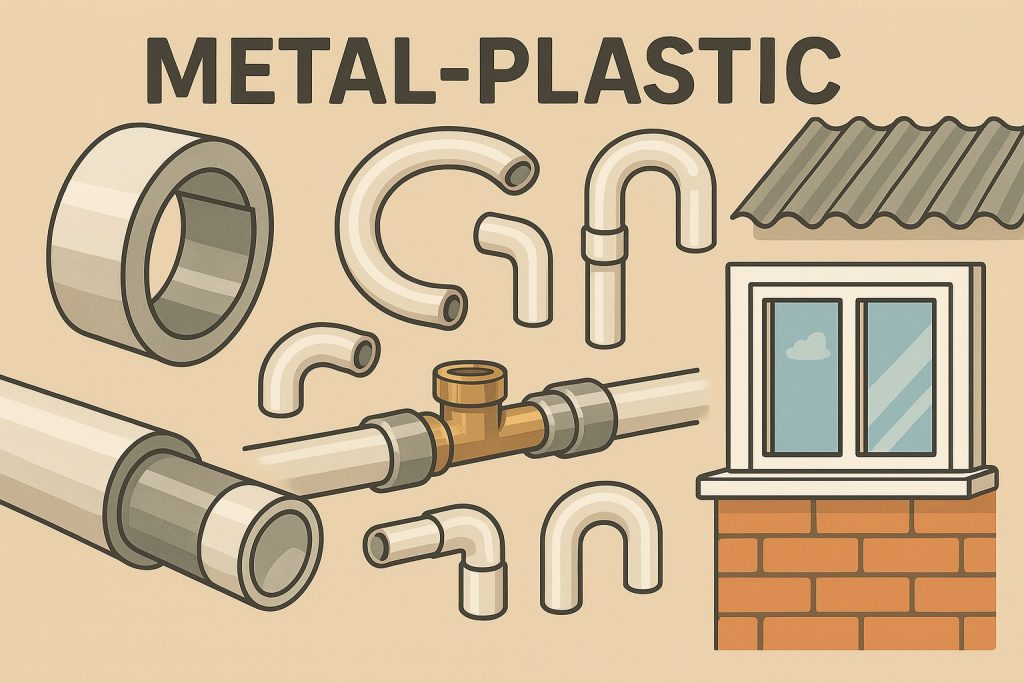Metal-plastic is a composite material that combines the strength of metal with the flexibility and corrosion resistance of plastic. This hybrid material has revolutionized many industries, from construction and plumbing to automotive manufacturing and consumer goods.
Structure and Composition of Metal-Plastic
Metal-plastic typically consists of multiple layers: a metal core—often aluminum—sandwiched between inner and outer layers of plastic such as polyethylene or polypropylene. Some versions include adhesive layers or protective coatings to ensure durability and stability.
The aluminum core provides rigidity and resistance to pressure, while the plastic layers offer corrosion resistance, flexibility, and insulation. This combination creates a material that is both lightweight and robust, perfect for applications that require both structural integrity and ease of handling.
Applications in Plumbing and Heating
One of the most common uses of metal-plastic is in piping systems. Metal-plastic pipes are widely used in modern plumbing and underfloor heating due to several advantages:
- Corrosion Resistance: Unlike metal pipes, they do not rust.
- Flexibility: Can be easily bent, reducing the number of fittings required.
- Thermal Stability: Suitable for both hot and cold water systems.
- Long Lifespan: Resistant to scale and internal damage, lasting decades.
These properties make metal-plastic piping an ideal choice for residential and commercial buildings.
Metal-Plastic in Construction and Design
In the construction industry, metal-plastic is used for window frames, panels, and roofing components. It provides:
- Energy Efficiency: Helps in thermal insulation.
- Aesthetic Versatility: Can be painted or textured to match different styles.
- Weather Resistance: Withstands sun, rain, and temperature fluctuations.
Thanks to its layered structure, metal-plastic is more resistant to warping or deformation compared to pure plastic materials.
Other Areas of Use
Beyond construction and plumbing, metal-plastic is found in:
- Automotive parts: Lightweight panels and fuel lines.
- Medical devices: Sterile and non-corrosive tubing.
- Furniture: Durable and lightweight frames.
- Consumer electronics: Casings and connectors.
Its hybrid nature makes it an appealing solution for areas requiring lightweight strength and chemical resistance.
Environmental Considerations
While metal-plastic offers many technical benefits, recycling it is challenging due to the fusion of different materials. Specialized facilities are required to separate the layers effectively. However, the long lifespan and energy-saving qualities can help reduce its overall environmental footprint when used properly.
Conclusion
Metal-plastic is a versatile and efficient material that bridges the gap between traditional metal and plastic. Its widespread use in piping, construction, and even healthcare shows its growing importance in modern technology and infrastructure. As sustainability practices improve, innovations in recycling and biodegradable alternatives may further enhance its environmental profile.
Glossary
- Composite Material: A material made from two or more different substances that remain distinct within the final product.
- Polyethylene/Polypropylene: Common types of plastic known for their durability and flexibility.
- Thermal Stability: The ability of a material to resist changes in shape or properties due to heat.
- Corrosion Resistance: The ability of a material to withstand damage caused by oxidization or chemical reactions.


